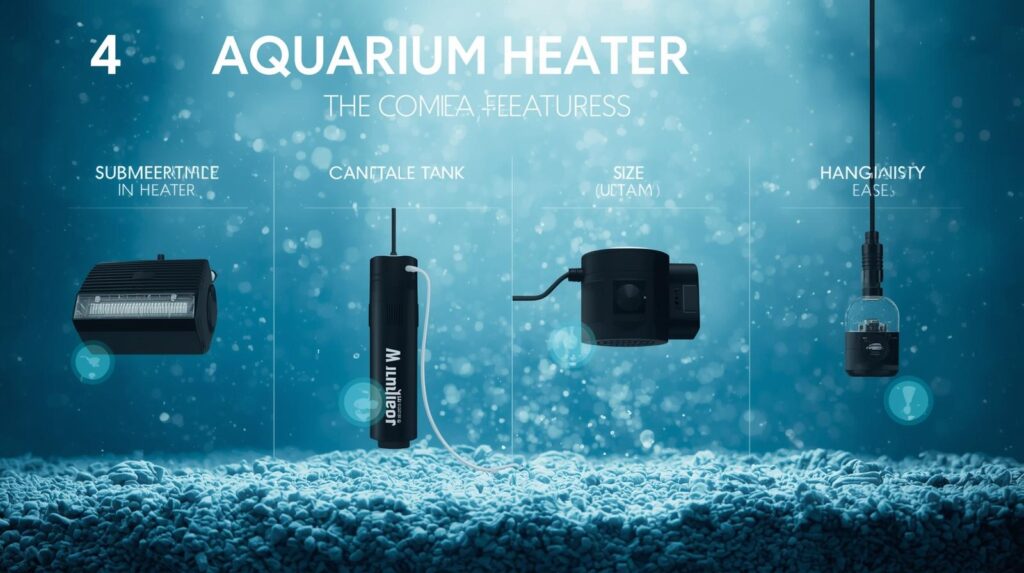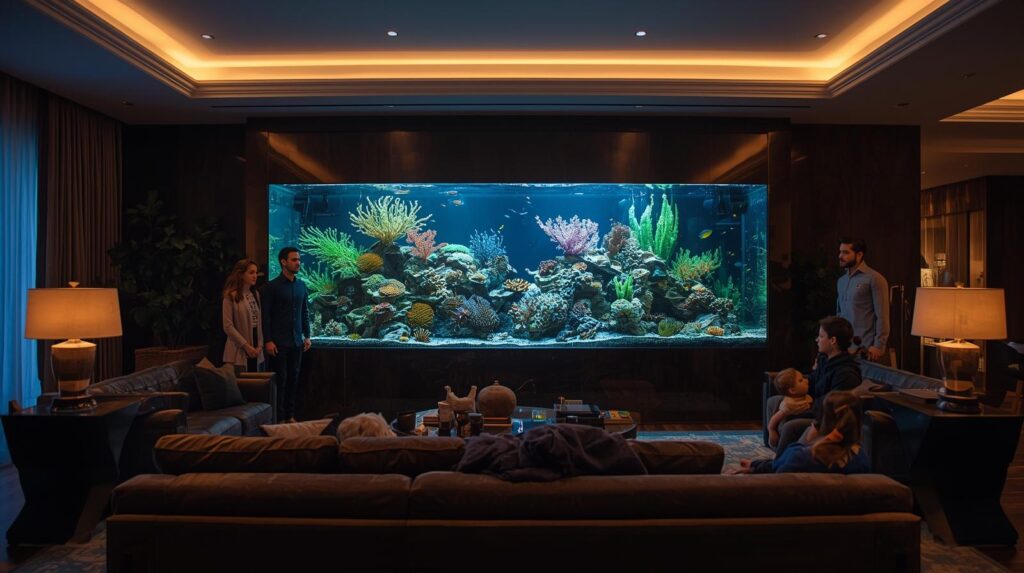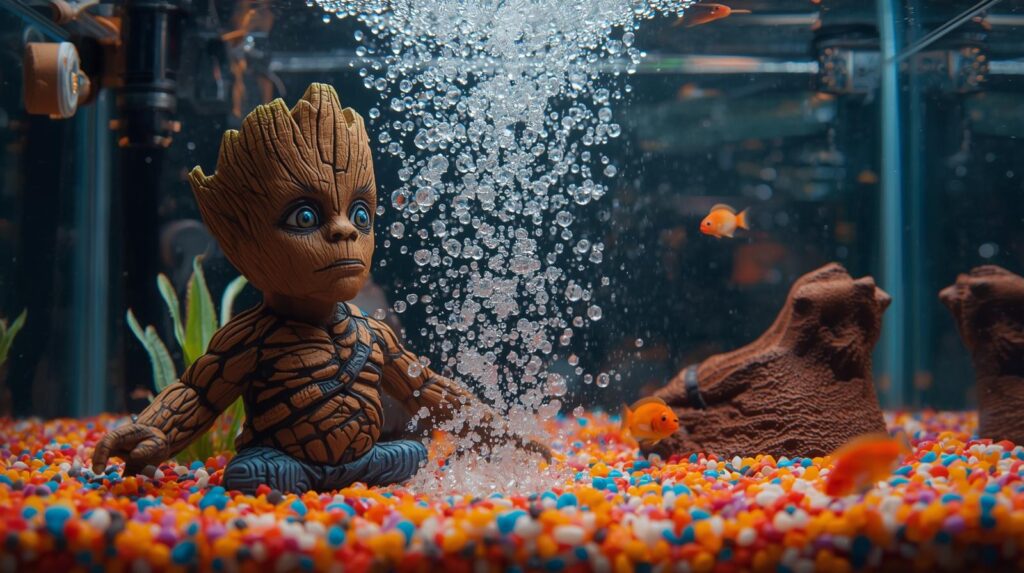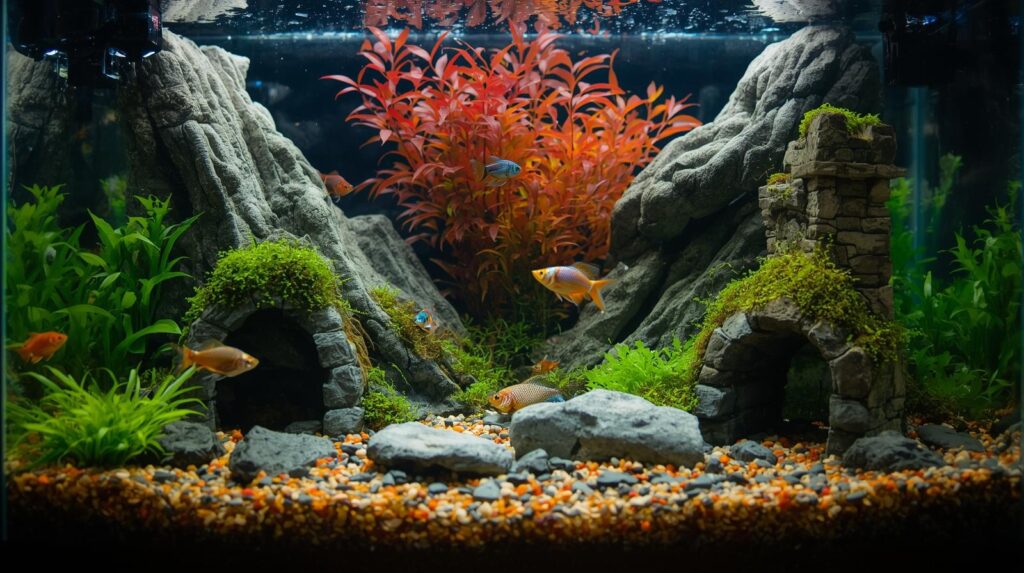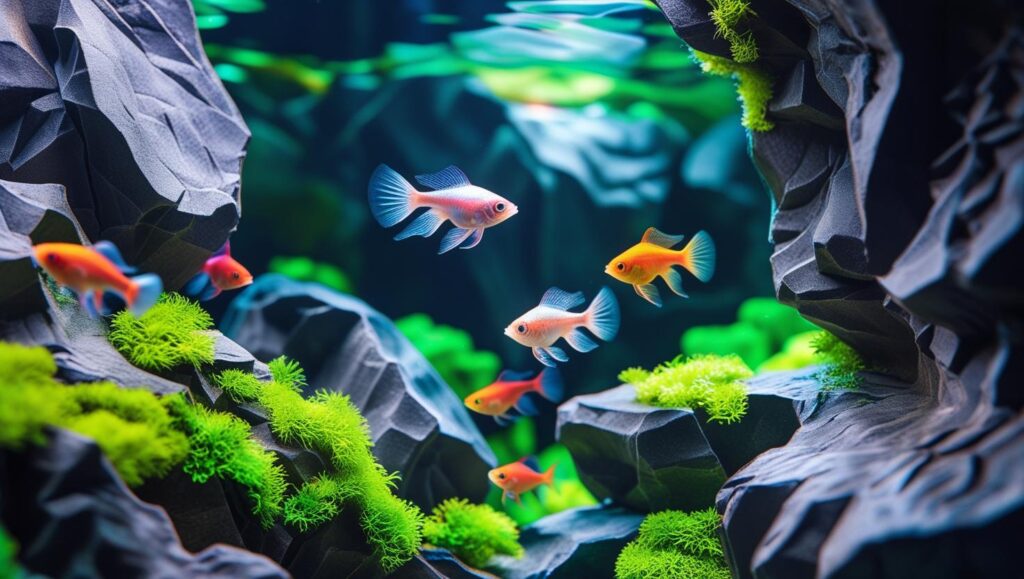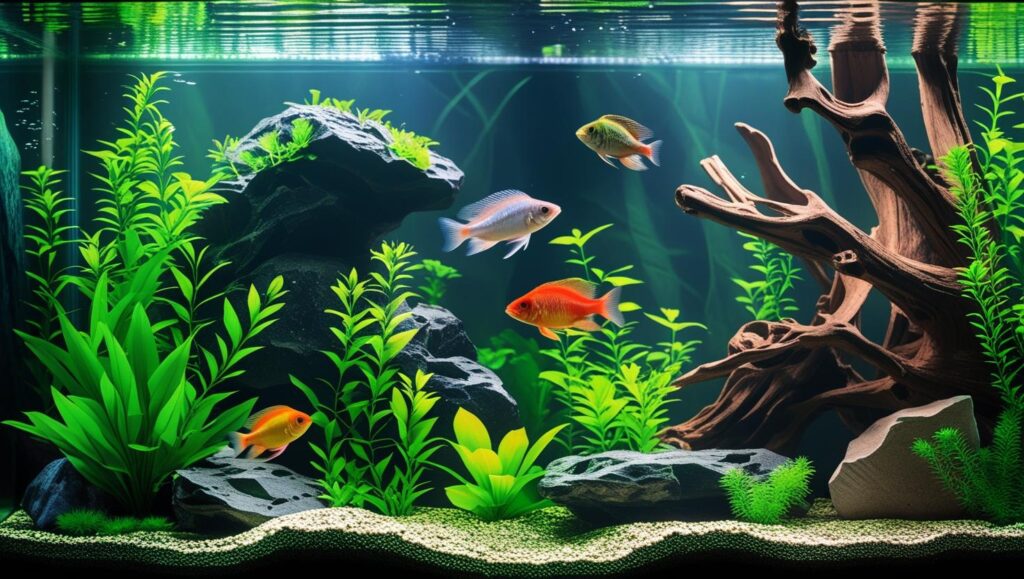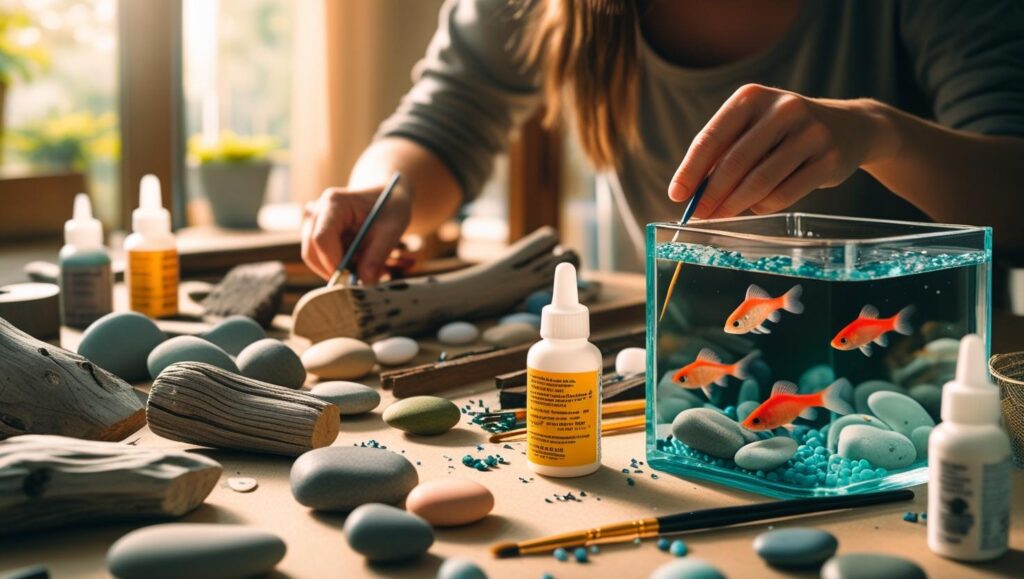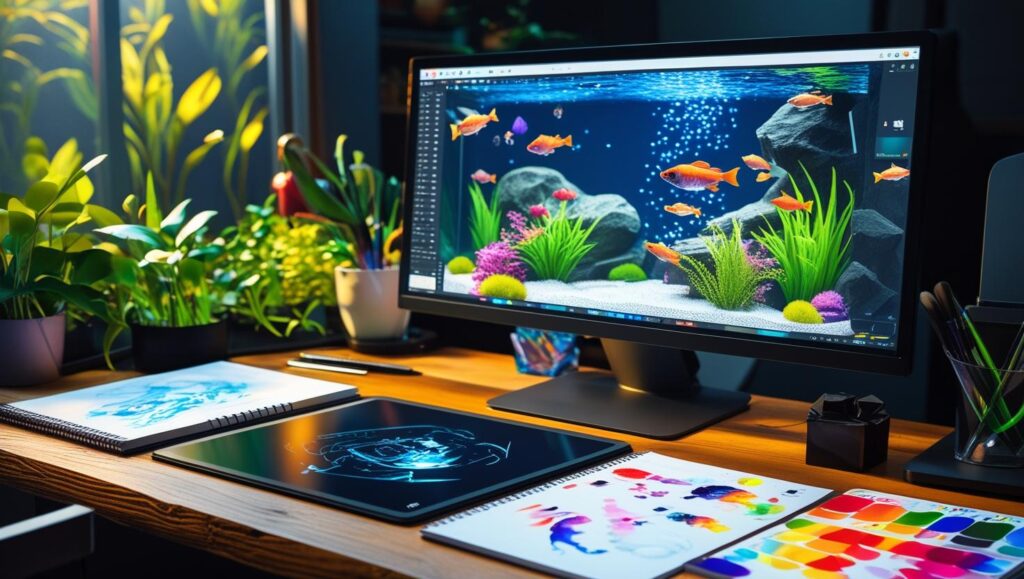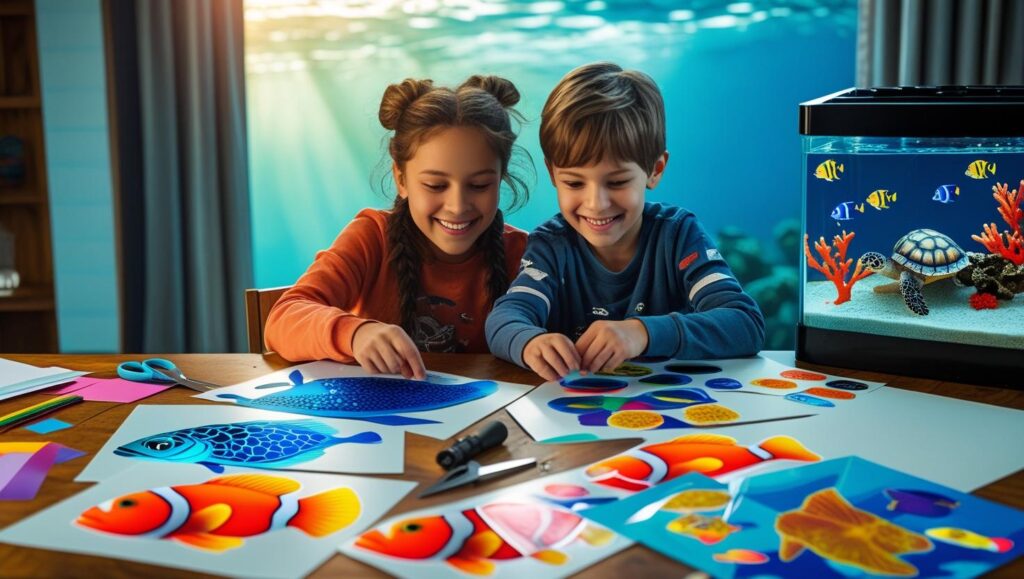How to Put Aquarium Background the Right Way (Step-by-Step Guide)

Ever stare at your fish tank and feel like something’s missing, even though everything else looks perfect? I’ve been there too. It’s surprising how a simple aquarium background can turn a plain tank into a stunning underwater world. But if you’ve ever tried to stick one on, only to end up with bubbles, wrinkles, or frustration, you’re definitely not alone. In this guide, I’ll Walk you through exactly how to add a background that actually stays in place and brings your whole aquascape to life.
Whether you’re decking out a tiny betta tank or a large reef setup, this step-by-step guide will help you get that clean, professional look, with zero guesswork.
Why Add a Background to Your Aquarium?

Adding a background to your aquarium instantly improves how your tank looks. It makes the colors inside pop and hides everything you don’t want to see. More importantly, it helps your fish feel safer and more at home.
I still remember the first time I added a background to my own tank. Before that, my setup looked okay, but something felt off. The cables were visible, the wall behind the tank was distracting, and my fish always seemed a bit uneasy. It felt more like a storage shelf with water than a real habitat. I didn’t think a background could make a difference, but once I added one, everything changed.
It Makes Your Tank Look Beautiful
A well-chosen background creates visual depth. It makes your fish stand out and your plants look fuller. Whether you go for a solid black sheet or a nature scene, it instantly gives your aquarium a polished look. What used to feel empty suddenly feels alive. I noticed visitors actually stopped and looked at my tank after the change. That never happened before.
It Helps Your Fish Feel Safe
Fish need a sense of enclosure to feel secure. A bare glass back makes them feel exposed. I saw it firsthand. My tetras would often dart around nervously, especially when someone walked by. But once the background was up, their behavior changed. They swam more calmly, exploring the tank with confidence. It was like they finally settled in.
It Hides the Mess
Heater wires, filter tubes, and wall plugs can ruin the look of your tank. A background hides all that. It draws the eye to what matters, your fish, your plants, your aquascape. When I look at my tank now, I don’t see clutter. I see a peaceful underwater world, and that’s exactly what I wanted from the beginning.
Adding a background seems like a small step, but it makes a big impact. It changed how I see my tank and how my fish live in it. And if you’re setting up or refreshing your own, this simple addition could be the upgrade you didn’t know you needed.
What Materials Do You Need to Put an Aquarium Background On?
To put a background on your aquarium the right way, you don’t need fancy tools just a few simple items that make the job easier and neater. Here’s what you’ll need.
Start with a background sheet. This can be vinyl or static cling. I used a static cling version on my first attempt and was surprised by how easy it was to work with. Then you’ll want a spray bottle filled with water and just a drop of dish soap. This trick helps the background slide into place without air pockets.
Have scissors or a utility knife handy for trimming. A squeegee or even an old credit card works great to push out bubbles. You might also need clear tape or adhesive spray if your background doesn’t cling on its own. For cleaning, a microfiber cloth and a little rubbing alcohol can help prep the glass. And trust me, if you’re working on a large tank, ask someone to help you hold the sheet in place. I didn’t the first time and I had to peel it off and start over.
How to Put Aquarium Background on Glass Tank (Step-by-Step)

Now let’s walk through the exact steps I followed to get a smooth, bubble-free background on my 20-gallon tank. It wasn’t perfect at first, but once I figured out the rhythm, it turned out better than I expected.
Step 1: Clean the Back Glass
Start with a clean surface. I used a microfiber cloth and a bit of rubbing alcohol to wipe down the back panel. It looked clean at first, but once I started wiping, I realized there was a thin film of dust and oil. Without cleaning, your background won’t stick evenly.
Step 2: Cut the Background to Size
Lay the background flat and hold it up to your tank. I trimmed mine just a little larger than the tank’s dimensions so I had some wiggle room. I learned not to cut too small having a little extra made lining it up so much easier.
Step 3: Spray the Glass Surface
Use your spray bottle and mist the entire back glass. Just a light coat will do. The soapy water lets you slide the background around a bit until it’s in the perfect spot. It also helps reduce air bubbles.
Step 4: Apply the Background
This part felt a little tricky at first. I lined up the top edge and slowly worked my way down. I made sure to press gently as I went, and having the soapy spray underneath helped it stay movable until I was happy with the position.
Step 5: Squeegee the Surface
Grab your squeegee or card and work out the bubbles. I started from the center and pushed outward. I took my time here. Even though a few tiny bubbles stayed at first, most of them disappeared once the background dried fully.
Step 6: Secure the Edges
If you’re using vinyl and want a more permanent hold, tape the edges or use adhesive spray. I used just a bit of clear tape in each corner, and it’s held up well so far. No peeling, even after a few months.
Once it’s all in place, let it dry before plugging anything back in. I remember stepping back after it was done and suddenly, my tank looked like a whole new world. Clean, calm, and totally transformed.
In the next section, I’ll help you choose the right type of background for your tank and style. This is where I had the most fun and a few regrets so I’ll share what worked for me and what I’d avoid next time.
Can You Put an Aquarium Background Inside the Tank?

Yes, you can put an aquarium background inside the tank, but it’s not always the best option. While it might look more natural, there are a few important things to consider before going this route.
I thought about placing my first background inside the tank. The idea of a seamless look really appealed to me. But after digging into the details, I realized it was more hassle than I expected. The background needs to be completely waterproof and 100% safe for fish. Any glue or adhesive must be aquarium-safe. That limited my options quite a bit.
The upside is it can look beautiful. No glare, no reflection. It’s perfect if you’re using a 3D background or want something textured. But cleaning becomes harder. You also risk trapping debris or interfering with equipment. For me, the outside option made more sense. It was easier to clean and much simpler to install or replace.
How to Install an Aquarium Background Without Bubbles
Bubbles are the biggest headache when adding a background. I had a few on my first try, and they drove me nuts. But with the right prep, you can get a smooth, bubble-free finish.
Start by spraying the back glass with a light mist of soapy water. That step alone makes everything easier. When I skipped it once, the background stuck too quickly, and bubbles were impossible to fix.
Apply the sheet slowly from the top. Press it down gently as you go. I used an old credit card wrapped in a soft cloth to smooth it out. It worked better than I expected. If a tiny bubble stays, don’t panic. Just poke it with a pin and smooth it over. For static cling backgroundshttps://aquariumeco.com/how-to-install-an-aquarium-background/, the process is much easier. Vinyl takes more time, but with patience, it works.
How to Replace or Remove an Aquarium Background
If you ever want to change your setup, removing the background should be easy if it was installed properly. I’ve swapped mine a couple of times, and the key is going slow.
Start peeling from one corner and go gently. If you used tape or spray adhesive, some residue might stay behind. I found that a little rubbing alcohol on a cloth works wonders. Warm water mixed with vinegar also helps. Just don’t rush the cleaning. Leftover glue can mess up the next background.
Before installing a new one, make sure the glass is spotless. Any bump or mark will show through. I learned that the hard way with a wrinkle I couldn’t fix later.
If you’ve painted your background, removal is tougher. Scraping and repainting takes time. That’s why I always suggest trying a removable option first unless you’re 100% sure about the look.
Best Background Options for Different Aquarium Types
Choosing the right background depends a lot on your aquarium type and your personal style. The goal is to enhance what’s inside the tank not distract from it. I’ve tried a few different styles over the years, and what works best often depends on the setup. Let me walk you through the options I’ve explored and the lessons I learned along the way.
For Freshwater Aquariums
Freshwater tanks tend to feel more peaceful and nature-inspired. That’s why backgrounds with lush plants, driftwood, or rock textures work beautifully. They create a forest-like feel that blends well with live plants and colorful fish.
When I first set up my 20-gallon planted tank, I went with a solid black background. It was a simple vinyl sheet, but the impact was immediate. My green plants looked more vibrant. My neon tetras practically glowed. It gave everything a clean, focused look without being distracting.
Painted backgrounds also work great for freshwater tanks. I tried this on a spare 10-gallon tank using matte acrylic paint. It gave a modern, minimal look and eliminated all reflections. But it was permanent. Once it’s on, there’s no changing your mind.
For Saltwater and Reef Tanks
Saltwater setups are a different story. These tanks are often brighter, more colorful, and full of motion. A vivid blue background can mimic the open ocean and make coral colors pop. I helped a friend set up his reef tank, and we used a reefscape image with soft blues and pinks. It looked like a slice of the ocean floor.
If you want a premium look, textured 3D coral backgrounds are stunning. They create depth and dimension you can’t get from a flat sheet. But they’re pricey and harder to install. Still, for a showcase reef tank, they’re worth considering.
Your tank type and style should guide your background choice. But no matter what you pick, make sure it complements and does not compete with what’s inside the tank. The right background should feel like part of the environment, not just a decoration.
Here’s a Quick Comparison Based on My Experience
| Type | Best For | Pros | Cons |
| Static Cling | Beginners, renters | Easy to apply and remove | Can peel over time |
| Vinyl | Long-term displays | Bright colors, sharp details | Harder to remove, may bubble |
| Painted (Acrylic) | Minimalist looks | No glare, clean finish | Permanent, hard to undo |
| 3D Panel | Show tanks, reef setups | High realism, textured effect | Expensive and less available |
Final Thoughts: Make Your Aquarium Stand Out
You’ve just learned how a simple background can completely change the feel of your aquarium. It’s more than decoration it’s about creating a space where your fish feel safe and your tank becomes a stunning focal point in your room. I know how rewarding it is to see your tank come alive with that perfect backdrop, and trust me, it’s easier than you think. So take a deep breath, gather your materials, and give your aquarium that upgrade it deserves. You’ve got this your underwater world is waiting to shine.
Can I use wallpaper as an aquarium background?
Yes, but it must be waterproof and sealed well to prevent damage or chemicals leaching into the tank.
How often should I replace my aquarium background?
Replace it when it fades, peels, or gets damaged—usually every 1-3 years depending on material and care.
Will the background affect water temperature?
No, backgrounds do not impact water temperature or tank conditions.
Can I remove the background without damaging the glass?
Yes, gently peel it off and clean any adhesive residue with rubbing alcohol or vinegar solution.
Are printed backgrounds safe for fish?
Yes, as long as they are made from aquarium-safe, non-toxic materials.
Can I use the background on acrylic tanks?
Yes, but be careful when cleaning to avoid scratching the acrylic surface.
Does a background help with algae growth?
Backgrounds don’t prevent algae but can hide algae buildup on the tank’s back glass.
What’s the best background color for low-light tanks?
Lighter backgrounds or blues can enhance brightness in low-light conditions.
Can I DIY my aquarium background?
Yes, painting or crafting custom backgrounds is popular and cost-effective if using safe materials.
Will a background affect my tank’s filtration?
No, but ensure background installation doesn’t block any equipment or water flow inside the tank.

